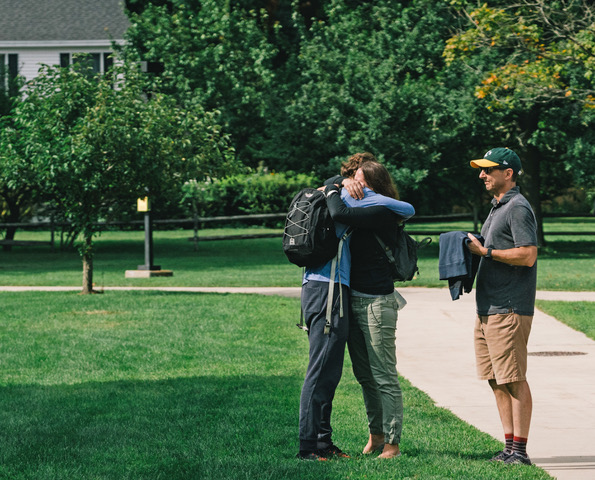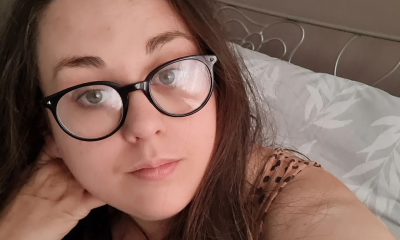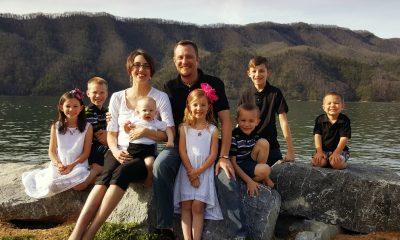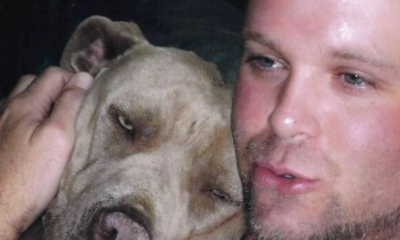By Sarah Risser
I was wrapped in a shroud of exhaustion. It was already the darkest time of year; the sun set late in the afternoon before most people sat down to dinner. Night after night for weeks, from mid-January through the end of that bitter, cold, Minnesota winter, I buried myself under blankets as the last light faded from the sky. I slept long hours and woke slowly, feeling groggy and sweetly intoxicated with thoughts of Henry. He was with me most nights, appearing as I had seen him last: young, strong, beautiful. Often, he’d come around a corner unexpectedly, evoking feelings of euphoria. I’d fill up with joy while embracing him, overcome with a love so powerful that it felt otherworldly. His presence — so palpable—assured me that he was okay, that nothing terrible had happened. As I slowly woke to a new day, I held fast to Henry’s presence, not wanting it to slip away, not wanting to differentiate between dream and reality.
On a Monday morning in early January 2019, Henry and I had set off to drive from St. Paul, Minnesota, to the Upper Peninsula of Michigan where there was decent snow for Nordic skiing. Henry was filling the last days of winter break after his first semester at Bowdoin College. As we drove along Wisconsin Highway 63, a two-lane, undivided, road, Henry suddenly gasped. A Dodge Ram truck had crossed the centerline and was speeding toward us. There wasn’t enough time or space to get out of its way. It loomed up, fast, dark, and monstrous, and then — inexplicably — time stopped, offering a moment just long enough to register that something terrifying was bearing down on us. That moment ceded quickly to an impact that was as loud and explosive as a bomb going off. Our Subaru Forester frantically spun and slid across the road as horror swept over me; I knew I’d die or be gravely injured. I instinctively braced against the dash, as if I could mitigate the final impact. With brutal force, we crashed a second time into a tree in a ditch alongside the Namekagon River. I sat stunned, covered in glass crystals, ears ringing, trying to breathe through a smoky cloud of chemicals.
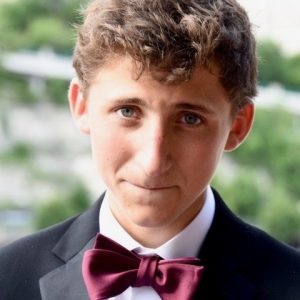 Then, it was eerily still. I knew instinctively that my wrist was shattered. I’d discover other injuries later: multiple broken ribs, extensive soft tissue damage around my left hip, and my right breast bruised to an inky black. Beautiful Henry lay motionless, slumped forward over the steering wheel, which glistened red with his blood. I grasped for my bag and forced numb fingers to unzip it. I groped for my phone. Every second was a precious opportunity to get help that I couldn’t afford to waste. I dialed 911. “I DON’T KNOW WHERE I AM. THERE’S BLOOD. MY SON IS UNRESPONSIVE. COME QUICKLY!” Panic rising, rising. I turned to Henry and yelled: “HELP IS COMING. DIG DEEP. YOU ARE TOO IMPORTANT NOT TO HANG ON. I LOVE YOU.” Henry lay motionless.
Then, it was eerily still. I knew instinctively that my wrist was shattered. I’d discover other injuries later: multiple broken ribs, extensive soft tissue damage around my left hip, and my right breast bruised to an inky black. Beautiful Henry lay motionless, slumped forward over the steering wheel, which glistened red with his blood. I grasped for my bag and forced numb fingers to unzip it. I groped for my phone. Every second was a precious opportunity to get help that I couldn’t afford to waste. I dialed 911. “I DON’T KNOW WHERE I AM. THERE’S BLOOD. MY SON IS UNRESPONSIVE. COME QUICKLY!” Panic rising, rising. I turned to Henry and yelled: “HELP IS COMING. DIG DEEP. YOU ARE TOO IMPORTANT NOT TO HANG ON. I LOVE YOU.” Henry lay motionless.
Weeks later, my husband and I drove back to Wisconsin to meet with the DA. We had concerns about the accuracy of the police report and several unanswered questions about the crash. We had called repeatedly; we expected Victim Services to reach out to our family but had heard nothing. Eventually, the DA finally agreed to meet. She was pleasant but firm, insisting that it was not her responsibility to determine if a crime had taken place, that it was entirely up to the police. The police didn’t think anything criminal had happened despite official documentation indicating the at-fault driver had been operating his Dodge Ram truck in violation of Wisconsin state law: he had overloaded a flatbed trailer without a braking system, was driving too fast for the conditions, had an open bottle of vodka under the driver’s seat, let his tabs expire, and had crossed the centerline. The DA explained in blunt terms that because no crime had taken place, Henry isn’t a victim — that there was no victim — and our family isn’t entitled to any support or anyone’s time. She then clarified that she was under no obligation to meet with us and was doing this on her own time.
The difference between the outpouring of love from our family and friends and the justice system’s cool dismissal of our family and a violent road fatality was stark. Henry’s community understood the magnitude and scope of the loss: Henry was a bright, motivated, young man, with a promising life that was just beginning to unfold. For Henry to lose that life was unimaginable, but a true accounting must also include the debilitating life-sentences of grief and the loss to society of all Henry would have contributed. In the days after the crash, one bouquet after another arrived, filling every empty space until there was no space left and we began sharing them with others. Friends dropped off nourishing, home-cooked, meals every night for weeks. We received books, robes and essential oils. Henry was honored at concerts, athletic events, and even by the Maine State Legislature. We received hundreds of beautifully written cards. Against this backdrop, it was incomprehensible that the justice system cared so little. Henry’s preventable death was construed as an ‘unfortunate accident,’ minimizing our devastating loss, effectively exonerating the at-fault driver (who, having not been held accountable, went on to continue to drive in violation of the law), and eliminating responsibility for ensuring something similar wouldn’t happen again. This didn’t seem right or fair; it exacerbated our confusion and trauma.
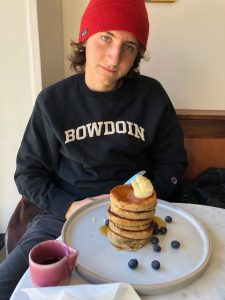 In the months after the crash, I became increasingly aware of the extent to which motor vehicles dominate our cities and lives. Although I’ve been surrounded by cars and traffic my entire life, I was suddenly struck by the fact that in most American cities there’s no way to get away from vehicular traffic. I learned that cities are designed around cars and streets are designed to ensure vehicles move quickly, to prioritize speed over the safety of all road users. I noticed how many pedestrians are instinctively obsequious to motorized traffic: bowing, waving, and scurrying quickly out of the way if a car stops to let them cross. My personal experience underscored the harsh reality that often when someone is killed in traffic there is a collective shrugging of shoulders. Once I began to see how much we’ve sacrificed and continue to sacrifice to sustain our auto-centric lifestyle, I couldn’t unsee it.
In the months after the crash, I became increasingly aware of the extent to which motor vehicles dominate our cities and lives. Although I’ve been surrounded by cars and traffic my entire life, I was suddenly struck by the fact that in most American cities there’s no way to get away from vehicular traffic. I learned that cities are designed around cars and streets are designed to ensure vehicles move quickly, to prioritize speed over the safety of all road users. I noticed how many pedestrians are instinctively obsequious to motorized traffic: bowing, waving, and scurrying quickly out of the way if a car stops to let them cross. My personal experience underscored the harsh reality that often when someone is killed in traffic there is a collective shrugging of shoulders. Once I began to see how much we’ve sacrificed and continue to sacrifice to sustain our auto-centric lifestyle, I couldn’t unsee it.
Losing Henry has left me with an aching heart and a heavy load of grief. I’m grateful to have connected with and learned from other crash victims through Families for Safe Streets, a wonderful and growing safe streets advocacy group that also provides support for victims of traffic violence. With their support, I’ve been able to elevate my voice by writing letters to my local paper, lobbying elected representatives, testifying at hearings, and organizing World Day of Remembrance events to honor victims of road traffic. I encourage anyone who has experienced a loss like mine to join Families for Safe Streets as I have and fight for proven strategies to prevent more tragedies.
The burden of grief often feels debilitating and sharing my story over and over can be exhausting and retraumatizing. But victims of road traffic are uniquely qualified to speak to the issue of road safety. Road safety leaders would be wise to amplify their voices and stories because these stories put a human face behind the statistics that prove, beyond a shadow of a doubt, we have a growing public health crisis of road fatalities, a crisis too many are blind to.
There is no silver lining to the sudden and tragic loss of one’s child; there is nothing positive to be gleaned. Henry should not have died in road traffic. Henry should be here, moving forward with his life, loving his friends and family. I advocate for road safety not because I’m trying to do something productive with my grief but because I understand how desperately we need safe roads.
For more information about Sarah, you can check out her website.
Support us by driving awareness!
Subscribe to our YouTube channel at YouTube.com/GrapGrief.
Follow us on Facebook at Facebook.com/GrapGrief and on Instagram at Instagram.com/GrapGrief.




